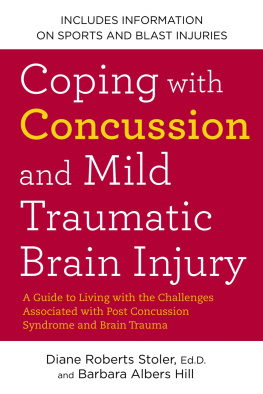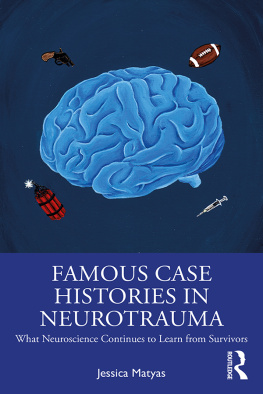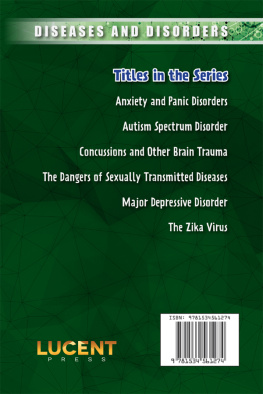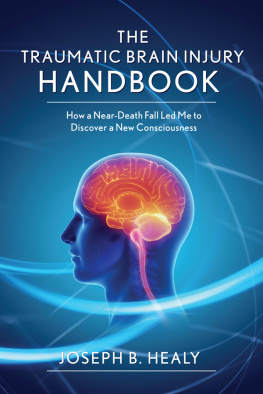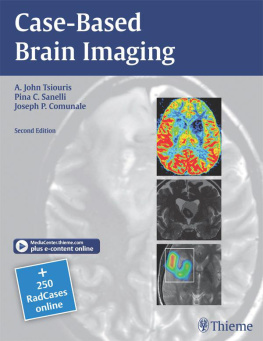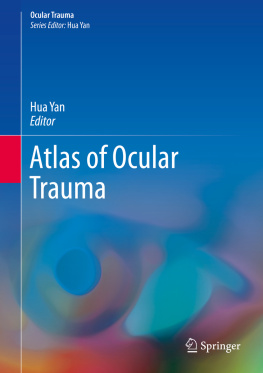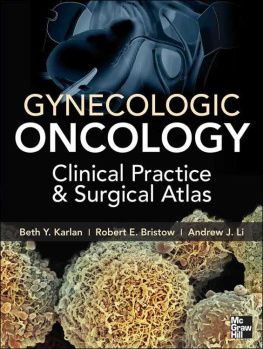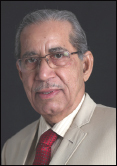Handbook of Neurotrauma
Volume 2 : Cranial Trauma
Copyright 2021 Salubris Medical Publishers,
A Unit of Health Solutions.
All rights reserved.
Salubris Medical Publishers
675, Sector 37, Noida 201 303
Phone: 0120 4204255
Email:
www.salubris.in
No part of this publication may be reproduced, copied, duplicated, translated or distributed in any form: electronic, digital and mechanical, or by any means, or stored in a database or retrieval system, without prior written permission of the publisher.
ISBN (13): 978-81-945581-9-4
ISBN (10): 81-945581-9-0
Publishing Director: Manish Choudhary
Content Manager: Sapna Rastogi
Typesetted by PrePSol
Notice:
The field of medicine is an ever changing science and is evolving with time. Any research happening across the globe and related clinical experience enhances knowledge; and impacts treatment methodology and drug therapy.
At the time of publication, the publisher, authors, editors and contributors of this work have carefully verified with available and reliable sources to provide accurate and complete information in accordance with the accepted protocols.
However, this does not provide any guarantee or responsibility on behalf of the publisher, authors, editors or contributors with respect to any drug dosage or identified pharmaceutical products. The readers are advised to confirm, consult and carefully examine all prescribing information in detail before opting for any surgical or medical methods and prescription related with the products or procedures mentioned in this work.
The publisher, authors, contributors, editors or whosoever is part of this work will not be held liable for any errors or discrepancies due to new developments in medical science, or any harm, damage or injury to any individual or property resulting from methods, ideas, concepts, theories, practices, instructions, products mentioned herewithin.
| Executive Committee
Neurotrauma Society of India |
President | Dr Yashbir Dewan |
President Elect | Dr Mathew Joseph |
Secretary | Dr Sumit Sinha |
Treasurer | Dr Amit Chakrabarty |
Editor (IJNT) | Dr Deepak Agrawal |
Executive Members | Dr Deepak KR Singh |
Dr M Vikram |
Dr Anil Kumar |
Ex President | Dr VD Sinha |
Dr PK Sahoo |
FOREWORD
I am pleased to write this foreword on behalf of the Neurotrauma Society of India of which I have been the founder President. I feel very satisfied that for the last 30 years, the society is doing very useful work on a topic which is unfortunately rampant in India. I also feel very proud that doctors like Sumit Sinha (Director, Department of Neurosurgery and Spine Surgery, Paras Hospital, Gurugram) are taking the Society ahead as its Secretary by using foresightedness and his aggressive dynamism. Under his able leadership, the two most important handbooks on Neurotrauma are being published for use by all postgraduates and teachers interested in trauma. Such books are a need of the hour. I still remember when I held an international trauma conference in Mumbai in 1994 and had brought out the book Modern Trends in the Management of Neurotrauma it became so popular that even years later libraries from overseas countries were requesting for a copy.
TBI is very common in India, and understanding epidemiology is important. In modern times the trend of epidemiology has changed. In cities two wheelers is the commonest cause of TBI and percentage of spinal trauma has significantly increased. I wish Dr. Deora and Dr. Shukla should have made a separate paragraph on such issues stressing the changing trends in the occurrence of cranial and spinal trauma in their chapter on epidemiology.
In cities like Mumbai next common cause is fall from running trains through open doors due to heavy congestion of commuters in the transport vehicle. The good news is that very soon Railways is introducing closed-door trains. City trains like Metro lines have closed doors. It will bring down the incidence of trauma.
With research in this topic, newer ideas are evolving. I do hope they will be helpful to the suffering TBI patients. One such idea has been propagated by Dr. Iype Cherian and it involves the concept of CSF shift oedema in rising ICP. He has advocated cisternostomy in severe TBI patients. Centers in India can try this method and evaluate the usefulness of the concept. If proved logical it may go a long way in improving the outcome in these unfortunate patients.
The book has 31 chapters involving more than three hundred pages covering varied aspects of the subject making it most comprehensive and complete. I have no doubt that this handbook will prove to be useful for all postgraduate students interested in Neurotrauma.
I commend Dr. Sumit Sinha for making this positive attempt in pursuit of progress in this much debated topic.
Prof. P. S. Ramani
Senior Consultant Neuro & Spinal Surgeon
Lilavati Hospital and Research Center
Mumbai;
Founder and Past President
Neurotrauma Society of India
FOREWORD
The Handbook of Neurotrauma Volume 2: Cranial Trauma ', is the official publication of The Neurotrauma Society of India (NTSI). Every emergency physician, general surgeon and more importantly neurosurgeon in India, who are involved in the cases of emergency and immediate treatment, must acquire good knowledge about head injury and its appropriate and timely management. Editor and contributing authors from hospitals across India have put in tremendous efforts to bring out this volume.
Looking at the magnitude of the problem, it has been estimated that in India there are more than 100,000 trauma related deaths each year. Motorcycles constitute 72% of the motorized vehicles on the road. It has also been documented that in 2017, 98 helmetless drivers died every single day on our roads. Disability adjusted life years (DALYs) lost due to injury exceed both cancer and heart disease put together. Most patients with head injury die in pre-hospital setting as well upon arrival in various departments not due to head injury but due to airway obstruction. The young patients even if they survive, they do so with permanent neurological disability burdening the family, society and nation.
This handbook of Cranial Trauma comprehensively covers various aspects of management of traumatic brain injury. It comprises of 31 chapters authored by experts in the field of neurosciences dealing with different aspects of management of traumatic brain injury. The book covers all the important aspects about management of head injury, with beautiful illustrations to increase understanding of the subject.
Who should invest in the book: the emergency physicians, general surgeons and neurosurgeons
Since it is a multiauthor book involving experienced senior faculty, who have shared their vast knowledge and clinical experience, makes it precious. There have not been any recently updated works on the Indian scenario. All other books, which might be available do not have the range of authors and/or institutions that are involved with the publication of this book. Moreover, it is an evidence-based approach towards managing traumatic brain injury.


